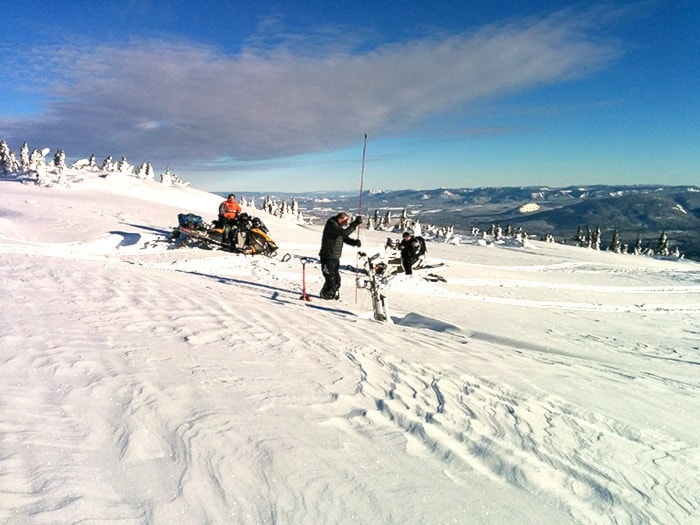On Jan. 10 at the Idywild Motor Inn, public avalanche forecasters from Avalanche Canada, Tom Riley and Mark Bender,discussed with 20 residents of Houston some of the things that Avalanche Canada is doing to increase awareness and safety, such as their new product, mountain information network.
This network allows outdoor recreation users to input data based on their experience of the areas they recently visited. The public can either submit a quick check list report, or a more comprehensive summary including weather, snowpack, witness of an avalanche or any incidents.
When asked what are some things Avalanche Canada would advise the public on avalanche safety, Riley responded, “Key one would be planning. Use our website. We are a non-profit group, so we are developing all these free things for people to use, like the weather app. Check the forecast, the hot zone report, check other people’s admin reports. I compare this to a forum where someone would receive information about fixing your vehicle or something, well this is the forum for sharing information and learning about avalanches.”
Creating an online dialogue about what other outdoor winter recreation users can expect is just one way to keep everyone safe.
Shea Long, a member of the Houston Search and Rescue team, attended the avalanche meeting on Tuesday. When asked how the information from Avalanche Canada helps Houston Search and Rescue he replied, “It benefits not only the HoustonSearch and Rescue, but all the riders as well. Really makes you open your eyes and realize how quick it can happen. Making sure that you’re well prepared can make all the difference in the world.”
Long says before going out on a trip, if riders take that extra precaution to make sure that their beacon batteries and beacon are working, carry a probe, a shovel, and a satellite phone or an inReach device, it can come in handy if an accident happens.
“If something were to ever go wrong, you can push a button and have your GPS coordinates for us to get to you as quick as possible. And checking Avalanche Canada’s website for updates on snow conditions and the avalanche danger rating are valuable information to access,” Long said.
By having these essentials, Long says that riders can then take that knowledge and apply it on site by digging holes and checking the snow pack layers to see where the weak areas are.
“If there are several weak layers then maybe it’s best to stay off the steep slopes for the day, with all of this [information and tools] it can make a huge difference, especially for us with search and rescue,” said Long.
On Jan. 11 and 12, Avalanche Canada forecasters and members of the the Houston Snowmobile club visited Telkwa to inspect and do some maintenance on the weather station that was buried by drifting snow.
“We dug out the weather station and returned on Thursday with an extension pipe to raise the weather station higher above the snow,” said Riley.
According to the report submitted on their website, conditions were as follow, “Up to 20 centimeters of recent, very light,new snow made for great riding in sheltered areas. Bottom third of the snowpack to ground consists of weak sugary facets and depth hoar,” submitted by forecaster.
For more information visit https://www.avalanche.ca/ your one stop shop for everything related to avalanches.
